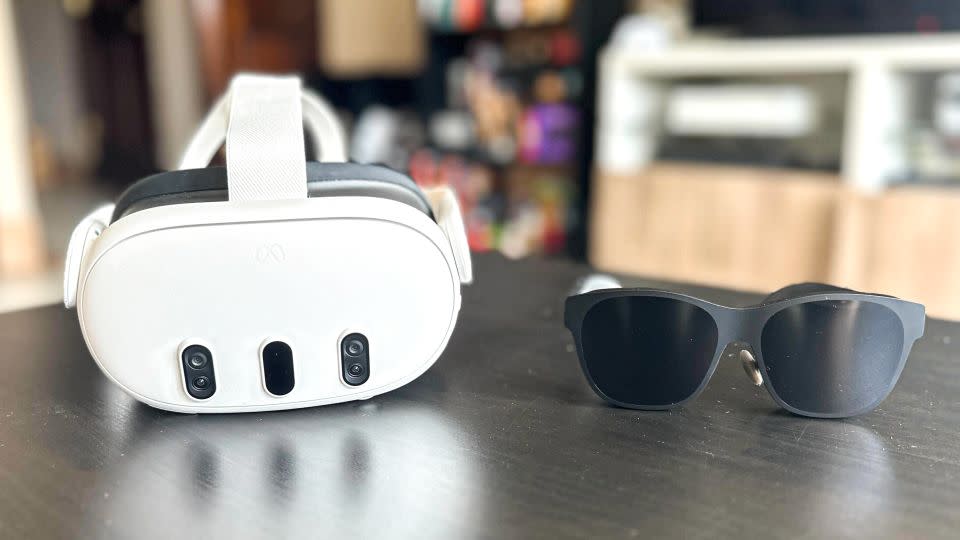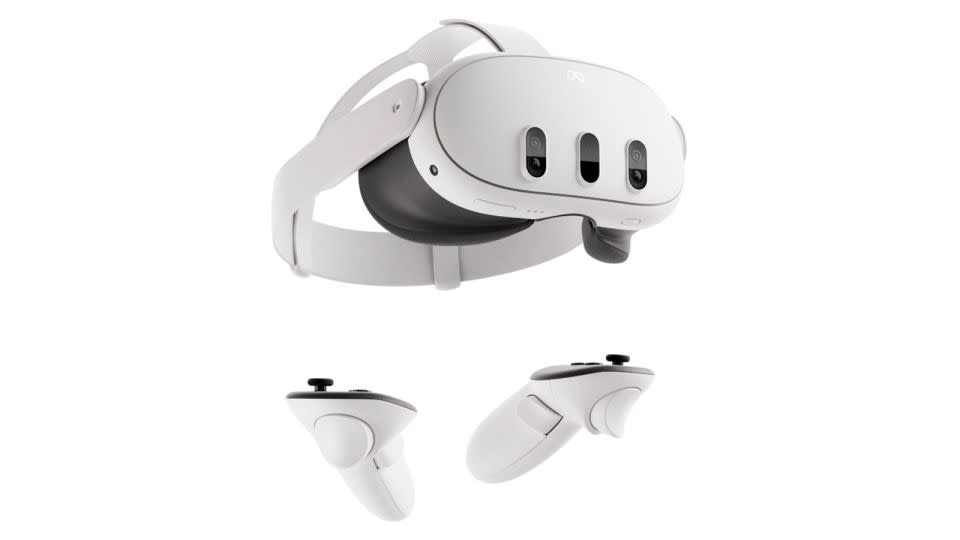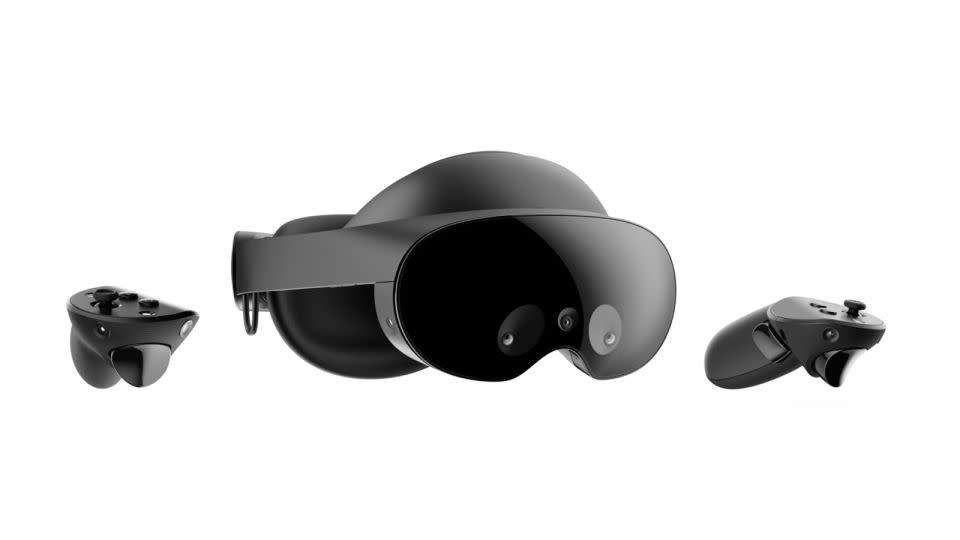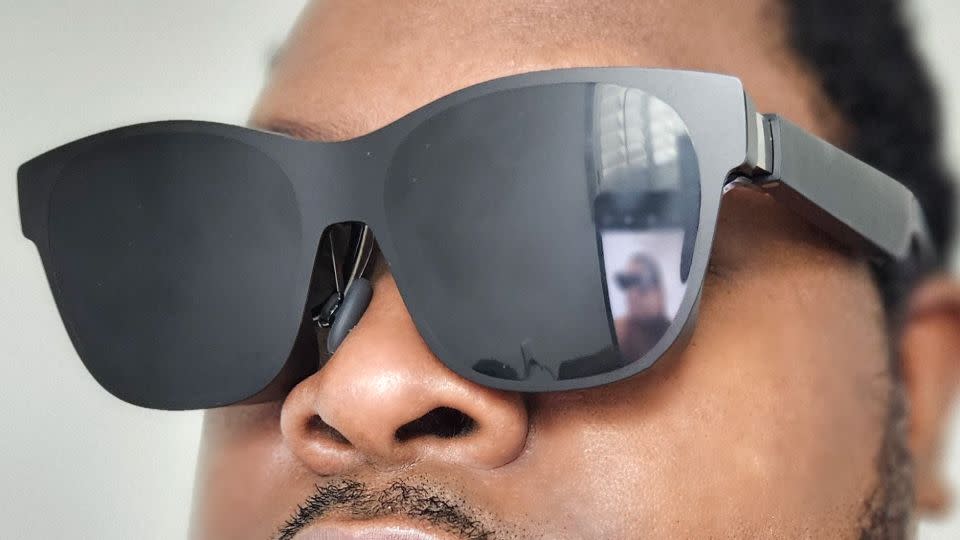Can’t spend $3,500 on Apple Vision Pro? Try these 3 great headsets instead
Content is created by CNN Underscored’s team of editors who work independently from the CNN newsroom. When you buy through links on our site, CNN and its syndication partners may earn a commission. Learn more

The Apple Vision Pro is finally here, and, based on our early hands-on time, brings a level of immersive entertainment and seamless multitasking directly to your eyes in a way that once only felt possible in science fiction. There’s just one problem: Priced at a whopping $3,500, Apple’s much-hyped mixed reality headset is still very much in the fantasy section of many folks’ budgets.
Fortunately, there are plenty of other great headsets out there that will let you turn any room into a personal movie theater or augment your workspace with a few extra virtual monitors — all without forcing you to take out a small mortgage in the process. From some of the best VR headsets we’ve tested, to discrete, stylish glasses that are deceptively smart, here are three great alternatives to the Apple Vision Pro that are worth checking out.
Meta Quest 3
Meta Quest 3

The Meta Quest 3 is our favorite overall VR headset, and the best affordable alternative to the Apple Vision Pro you can get right now.
From $498 at Amazon
From $500 at Best Buy
Why it’s a good alternative
Our favorite VR headset, the Meta Quest 3 is an easy recommendation for folks who want a taste of Apple’s immersive future without spending a few grand. It offers a lot of the same core functionality as the Vision Pro, including the ability to stream movies on your own personalized screen, get work done in floating windows and use exciting mixed reality apps that blend the digital world with your IRL living room.
Meta’s headset is also the clear winner over the Vision Pro when it comes to gaming and fitness, thanks to a huge, ever-growing selection of great software that offers tons of ways to play and move in VR. From engrossing, console-quality blockbusters like Asgard’s Wrath 2 to arcade-y pick-up-and-play titles like Beat Saber and Walkabout Mini Golf to fun and effective workout experiences like Supernatural and FitXR, the Quest store is home to a thriving library of apps and games that are tailor-made for virtual reality. You can stream hundreds of Xbox games to your headset via the new Xbox Cloud Gaming app, and connect the Quest 3 to your gaming PC to dive into an even higher-fidelity library of VR games on platforms like Steam.
The Vision Pro can play games, but aside from a few neat mixed-reality experiences like Super Fruit Ninja and Synth Riders, you’ll mostly be playing Apple Arcade or App Store titles on a floating 2D screen. That’ll likely change over time, but the Quest 3 currently benefits from a more mature app store that’s had a few years to flesh out.
What you’re giving up
While the Meta Quest 3 functions a lot like the Vision Pro at a basic level, it can’t match Apple’s headset on sheer power and visual fidelity. Between its zippy Apple M2 processor (the same one powering our best laptop pick) and its whopping 23-million-pixel display system, everything just feels more responsive and looks sharper on Apple’s headset. Apple says that you’re essentially getting “more pixels than a 4K TV” per eye, something that certainly seemed to be the case when I watched the Super Mario Bros. Movie trailer or zoomed into a set of iPhone photos to reveal some incredible detail.
The Quest 3 also lacks eye tracking, which is the Vision Pro’s not-quite hidden weapon. Navigating on Vision Pro is as simple as looking at something you want to select and pinching your fingers; on the Quest 3, you’ll still need to rely on your controllers or the headset’s somewhat iffy hand tracking. And then there’s the usual Apple device vs. non-Apple device debate. Do you use an iPhone and a Mac and want all your stuff synced up across your devices? Unless you’re cool with using Facebook Messenger and WhatsApp for your headset communication, you’ll likely have a better time with the Vision Pro.
Meta Quest Pro
Meta Quest Pro

If you want an upgraded Meta Quest experience with eye tracking — one of the Vision Pro's key features — the Quest Pro is a worthy alternative.
$894 at Amazon
$899 at Best Buy
Why it’s a good alternative
The Meta Quest Pro has all of the benefits of the Quest 3 with one crucial upgrade: eye tracking. It might not sound like a big deal, but the ability to navigate virtual reality by simply looking around goes a long way towards making this relatively nascent tech feel frictionless and intuitive. It also means that you can, for example, see your Oculus Avatar’s eyeballs move in sync with your own when using certain apps, which may be cool or just creepy depending on your preferences. You’re also getting a slightly upgraded processor compared to that of the Quest 3, though the latter headset has a sharper overall display.
What you’re giving up
Despite being a bit faster than the Quest 3, the Quest Pro still isn’t quite on the Vision Pro’s level in terms of overall performance (Meta’s and Apple’s headsets are both snappy, but things just feel a bit more instant on the latter). You’re making the same trade-offs as you would with a Quest 3 — this is a headset that’ll get you a robust library of great games and productivity apps, but without the sharper display and tight Apple integration of the Vision Pro.
Xreal Air 2 Pro
Xreal Air 2 Pro

The Xreal Air 2 Pro are a more compact, unassuming alternative to the Vision Pro that let you watch movies and play games from your existing devices on your own personal virtual display.
Why it’s a good alternative
If the whole “personal TV screen” thing is the most appealing thing about Vision Pro to you, the Xreal Air 2 Pro glasses are a much more affordable (and less attention-grabbing) alternative to Apple’s goggles.
Instead of being a full-on computer for your face, these compact smart glasses essentially mirror whatever’s on your phone, computer or even game console on a discreet virtual display that only your eyes can see. There’s no overly complicated setup process; just plug them in to your device of choice via USB-C, and you’re good to go.
On their own, the Xreal Air 2 Pro present you with a 130-inch, 1080p virtual screen that we found to look great for binging movies and playing games. While you won’t be able to immerse yourself in the iconic Avengers Tower from the Marvel Cinematic Universe or the breathtaking Haleakalā mountains like you can in Vision Pro, the Air 2 Pro’s various electrochromic dimming options (0%, 35% and 100%) let you block out ambient light to get more engrossed in whatever you’re watching. Connecting the optional $118 Xreal Beam accessory unlocks even more possibilities, including up to a 330-inch display that can stay in place as you move your head around, or a 20-inch “sideview” screen that lets you move your content off to a corner while you focus on the real world for a second.

The Beam also allows for a smooth connection to handheld gaming consoles like your Nintendo Switch or Steam Deck — something that’s perfect for when you want to play some Zelda on a flight without tilting your neck down the whole time. While the Vision Pro already supports several top streaming apps and can work in tandem with your MacBook, it’s not something you can just plug into a gaming console or streaming device for an instant personal display (at least not without some clever but complicated workarounds).
But perhaps the Air 2 Pro’s biggest advantage over Apple’s headset is just how small and unassuming they are. The glasses weigh a fraction of the Vision Pro at less than 3 ounces, and since they more or less look like a regular pair of sunglasses, they probably won’t draw much attention when you’re using them on a plane (or on the subway, if you must). And since this is a wired gadget that’s basically just displaying what’s on your other devices, you don’t have to worry about battery life — at least until your phone or laptop starts running out of juice, that is.
What you’re giving up
In terms of functionality, the Air 2 Pro are the most basic device on this list. They’re basically a wearable monitor — there’s no built-in interface, robust app store or gesture-based navigation. And as nice as that 1080p screen looks, it’s not as sharp as what you’ll get from the Vision Pro or its Meta rivals. If you want a truly standalone device that doesn’t need to be tethered to your phone, computer or console, you’re better off looking elsewhere.
That said, Xreal does have a true Vision Pro rival coming soon in the $699 Xreal Air 2 Ultra. Set to arrive in March, these glasses look to offer true spatial computing — you can navigate around with your hands, watch 3D movies, play with digital objects and smoothly multitask between various floating windows, just to name a few tricks. Combine that with a sleek design and all of the existing perks of Xreal’s glasses, and you’ve got a compelling $699 package that, while not cheap, is still a fraction of the price of a Vision Pro. We were very impressed by the Air 2 Ultra during our early hands-on time at CES 2024, and we’re eager to see how they stack up to Apple’s headset once we have both units in-house.
How they compare
Bottom line
While none of these headsets can fully replicate what the Apple Vision Pro does — especially when it comes to bringing Apple’s own apps and signature ease of use to the virtual world — they all come close enough for a fraction of the price. Heck, many of these headsets even do things that Apple’s $3,500 goggles can’t.
The Meta Quest 3 is the easiest recommendation on this list (especially if you’re into gaming and fitness), with the Quest Pro being a more niche consideration for folks who really like the idea of eye tracking. And if all you want is a personal, portable display for enjoying your existing movies and games — particularly one that won’t raise an eyebrow in public — you can’t go wrong with the Xreal Air 2 Pro. We’re excited to spend more time with both the Vision Pro and its ever-growing crop of competitors as this category continues to mature, so stay tuned for much more from the world of mixed reality.
Note: The prices above reflect the retailers' listed price at the time of publication.
For more CNN news and newsletters create an account at CNN.com

